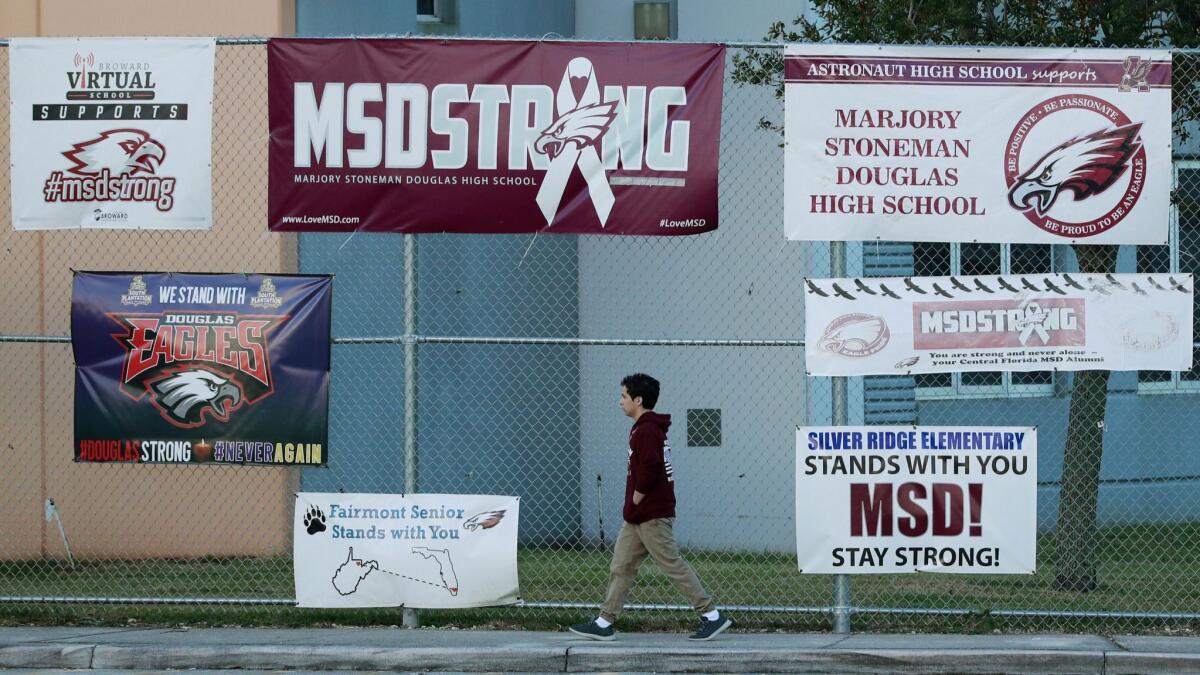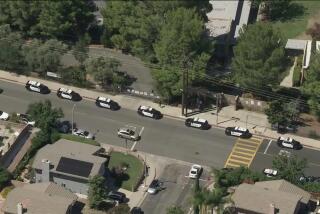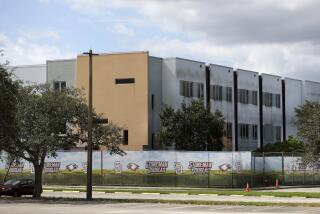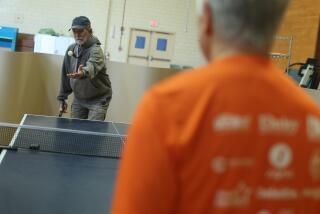Parkland survivors’ deaths are putting suicide prevention in the spotlight

- Share via
More than a year after the massacre at Marjory Stoneman Douglas High School, the apparent suicides of two teens who survived the Parkland, Fla., shooting has put the spotlight on the aftermath of trauma, and on how to help those at risk of taking their own lives.
Mental health experts caution that suicides are often the result of a mixture of factors. But the deaths, and that of the father of a child killed in the 2012 Sandy Hook Elementary School shooting in Newtown, Conn., have spurred conversations about trauma, suicide warning signs and prevention.
Dr. David Schonfeld, a pediatrician and director of the National Center for School Crisis and Bereavement at USC, says there’s a misconception that people who have experienced trauma may only need services for a finite period of time.
“That isn’t the case,” he said. “We should hold up the expectation for recovery — and most people do recover — but we have to recognize that everyone would benefit from support and additional services, including clinical interventions.”
National Suicide Prevention Lifeline: (800) 273-TALK (8255) »
What can schools do?
Schools need to focus on fostering a welcoming environment where students are not afraid to talk about mental health, experts say. Staff members — not just teachers, but all who might interact with students — should be trained to identify and reach out to those who may be at risk for suicide or depression, they say.
Scott Poland, a professor at Nova Southeastern University in Florida who studies suicide prevention, recommends that staff in all schools, not just the sites of mass shootings, receive an hour of training a year on the warning signs of youth suicide and how to report them within the school system.
Warning signs for suicide can include aggressive or impulsive behavior, increased alcohol use, social withdrawal, dramatic mood swings, reckless behavior, and threats or comments about killing oneself, according to the National Alliance on Mental Illness.
Schools should establish ways to anonymously report suicidal statements, add anger management to the curriculum, and create a school safety task force that receives input from mental health experts, Poland said.
Schools across the country should improve their approach to suicide prevention by tightening relationships between teachers and students, said Ron Avi Astor of USC, an expert on school violence.
“It’s not just the Parkland kids,” he said. “This is a much larger national issue that we can do better on.”
Suicide was the second-leading cause of death among people aged 10 to 34 in 2016, according to the Centers for Disease Control and Prevention.
School staff members should look out for students who may already be vulnerable, such as homeless, LGBTQ, foster or gang-affiliated children, said Astor.
He has studied schools worldwide that are located in high-risk areas but “somehow are like oases” for students who need mental health support. These schools, he said, have made themselves caring, warm and supportive, so that students know they can receive help.
“It’s available all the time. It’s visible; it’s around,” Astor said. “There’s no stigma.”
After the Parkland attack
After the shooting at Stoneman Douglas, the school district brought in therapy dogs and counselors for students, said Lori Alhadeff, whose 14-year-old daughter, Alyssa, was killed in the shooting.
Two portable classrooms were set up where students can receive mental health services, said Alhadeff, who now serves on the Broward County School Board. The district also promoted a county “resiliency center” in Parkland.
But she said school officials and the community could have done a better job of promoting suicide prevention education. “It’s complicated,” she added. “Services were available, but we can’t force people to get help.”
After the recent deaths, a wellness center for the Marjory Stoneman Douglas community opened ahead of schedule. The goal of the center, Eagles’ Haven, is to help individuals create a plan for managing their lives after traumatic incidents, said Sarah Franco, executive director of Jewish Adoption and Family Care Options, which runs the wellness center.
“It could be therapy for someone, a yoga class for someone else, running for someone else, healthy eating,” Franco said. “We just want to have conversations with people about how to make that happen.”
What can parents do?
Poland’s advice for parents in Parkland: Don’t be afraid to talk to your children.
“Bring up the fact that there have been suicides,” he said. “Ask them how they can help themselves or their friend when someone is suicidal. Ask if they know the national crisis helpline number or text number.”
In Parkland, after word spread of the second teenager’s death last week, parents — including some who lost their children during the massacre — gathered Sunday with community leaders and school officials to discuss what they could do to help students with trauma.
“Parents are very upset, very concerned and wanting to seek help for their children,” said Alhadeff.
School and community leaders are urging parents to talk with their children each day and are promoting the “Columbia Protocol,” Alhadeff said. The set of questions created by a Columbia University psychiatry professor aims to help recognize when someone who may be at risk for suicide needs immediate help.
The questions range from “Have you wished you were dead or wished you could go to sleep and not wake up?” to “Have you taken any steps toward making a suicide attempt or preparing to kill yourself (such as collecting pills, getting a gun, giving valuables away, or writing a suicide note)?”
“Parents need to have conversations as often as necessary,” Alhadeff said. “It’s really engaging your child and making sure they’re not suffering in silence.”
Conversations, she said, do not have to take the form of interrogating kids about suicide. “It’s not just asking those six questions about suicide, but communicating with your child and knowing what’s going on in their life.”
Some Parkland parents said in interviews that they didn’t want to ask their teens questions about suicide for fear of turning them off. Others said they feared they would be putting ideas about suicide into their children’s heads.
But the National Institute of Mental Health says studies have shown that asking people about suicidal thinking does not bring about such thoughts or actions.
‘A shared purpose’
The activism of many of the Parkland students, who rallied massive crowds at the White House and have continued to press for stricter gun laws, may have helped them cope, said Astor, of USC.
“Some of them have gotten very active politically for the memory of their friends,” Astor said. “Having a social mission and a social purpose and a group that you work with together could be helpful, very helpful, with that survivor’s guilt issue.”
“Anything that brings them together,” he said, “for the memory of the people that were lost.”
Times staff writer Jenny Jarvie contributed to this report.
More to Read
Sign up for Essential California
The most important California stories and recommendations in your inbox every morning.
You may occasionally receive promotional content from the Los Angeles Times.











